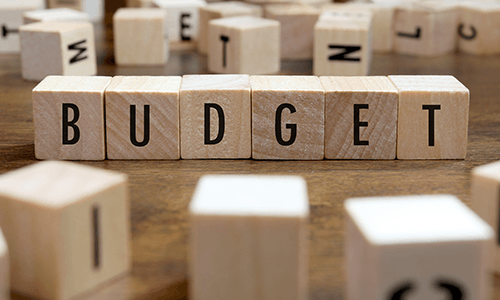Many of you are in the process of completing your 2017 operating budgets for your boards/committees/commissions (constituencies). Most operating budgets consist of anywhere between 80-100 individual line items that will guide the association with its operations for the next year. Of these 80-100 line items your constituencies will debate heavily on 5-10 items since the majority of the other line items are governed by union labor rates and contract requirements. Here are a few questions: When you and your constituencies are reviewing the proposed budget, how much time is spent on analyzing your reserve budget? Are you making decisions on what the association will complete in the next five years? Are you analyzing whether current funding of the reserves is adequate to achieve all of the association’s goals? Finally, do you feel that your association is reactive rather than proactive with capital repairs/projects?
The reserve budget is as important (if not more important) than the annual operating budget yet many associations spend only a few minutes reviewing reserve funding and expenditures on an annual basis. Section 9.c.2 of the 2016 Illinois Condominium Property Act (ICPA) states:
All budgets adopted by a board of managers on or after July 1, 1990 shall provide for reasonable reserves for capital expenditures and deferred maintenance for repair or replacement of the common elements. To determine the amount of reserves appropriate for an association, the board of managers shall take into consideration the following: (i) the repair and replacement cost, and the estimated useful life, of the property which the association is obligated to maintain, including but not limited to structural and mechanical components, surfaces of the buildings and common elements, and energy systems and equipment; (ii) the current and anticipated return on investment of association funds; (iii) any independent professional reserve study which the association may obtain; (iv) the financial impact on unit owners, and the market value of the condominium units, of any assessment increase needed to fund reserves; and (v) the ability of the association to obtain financing or refinancing.
Where do you start? The reserve study. Your association should have a detailed reserve study performed by a third party engineering firm. Community Associations Institute (CAI) has a Reserve Specialist (RS) designation that is awarded to qualified reserve specialists who through years of specialized experience can help ensure that community associations accurately prepare their reserve budget. The reserve study will report on the physical analysis and the financial analysis of the association for a period of time (15 – 30 years) and will assist you in developing a funding plan. Finally it will become a road map that will let you know what expenditures you and the board should begin to think about.
Grant Ostrek, RS, CDT of Waldman Engineering Consultants, Inc. recommends “to have a reserve study updated every three to five years including a site visit by a professional consultant and review of any changes to the common elements since the last study was performed. Conditions that may accelerate this timeline include performing significant replacement or restoration projects at the property or determining that a need for such projects exists that may alter the fund status or call for a detailed plan of action that considers the financial status and impact on fund levels. Since elements deteriorate at varying rates and the finances of the property are typically changing on an annual basis, the need to maintain balance between the two is an ongoing process”. Further information about reserve studies and how to properly maintain a reserve study can be found in many CAI publications and white papers.
Other considerations include: 1) bank statements from the previous and current years showing the reserve account balances, 2) loan documents and amortization schedules, and 3) Year to Date General Ledger Reports from previous and current years. All of these documents will assist you in building an accurate starting point for your reserve budget. The starting point is identifying which projects (if any) have been completed and how much cash you will have at the beginning of your reserve budget. The result is, in essence, a cash flow report showing the income flowing into the reserve account (reserve contributions, interest, etc.) paired with the expenditures reported by the reserve study, any loan expenses, as well as any special projects that the board would like to accomplish. The length of the report can equal the length of your reserve study (15, 20, 30 years); however, it is the first five years that are the most beneficial. A board can make decisions over the next five years as it directly affects them. Items reported in future years are rough estimates. In the future, the reserve budget adds another year so that it is always reporting five years worth of accurate information.
How much should your association contribute to the reserve account on an annual basis? This is the most common question asked by boards/committees/commissions and unfortunately there is not one correct answer. The answer depends on two things: 1) what does the board want to accomplish? and 2) what is the board’s funding strategy? The funding strategy can either be statutory funding (based on local statutes), baseline funding (goal is to keep the reserve balance above zero), threshold funding (keeping the reserve balance above a specified dollar or percentage funded amount) or full funding. The most conservative approach is full funding as its goal is to maintain the reserves at or near 100% as called for on the component inventory. Further information regarding these funding strategies can be found in CAI white papers and publications.
What are some of the benefits of a well-developed reserve budget?
A Game Plan
Once a reserve budget is developed and maintained on a regular basis, it becomes a tool that the board and management team can rely on. It is the game plan that everyone refers too. If a new idea or change in strategy comes up then the board can immediately see the financial consequences of the idea before the change is approved. For example: Let’s say the owners are requesting that the hallways be updated with a new look in the year 2017 but the reserve budget shows that the hallways are not scheduled to be looked at until the year 2020. With a reserve budget projecting a cash flow into the future, the board can see what the consequences of that change will have on its overall cash flow and if the project can be done in 2017 without additional funding. The board can then make a sound business decision on the owners’ request rather than a guess.
Assessments
The current owners will not be over assessed due to a higher than necessary reserve contributions and, more importantly, the future owners will not be under assessed and issued a special assessment to take care of a capital project. How many times have you come across a building with inadequate funds to pay for a large capital project that was previously reported in the reserve study? The board is faced with a decision to enter into a loan or issue a special assessment (or both) depending on the size of the project. Unfortunately, some boards decide to take the path of deferment and let future boards handle the issue. A reserve budget can assist boards with planning for these projects.
Investments
With an accurate plan in place boards can begin strategizing on how to invest reserve funds. Anthony Dister, CMCA and Vice President at Community Advantage adds that “interest rates are somewhat flat so boards should attempt to maximize every dollar available and earn additional interest income on investments”.
Energy Saving Projects
Energy savings projects can be analyzed with their up-front costs vs. the pay back periods due to the energy savings that will be achieved. The project is most likely not listed in the reserve study and therefore not part of the funding analysis in that study. The reserve budget will be able to show you if the up-front costs and subsequent energy savings to pay those costs can be included in the overall funding plan without any severe consequences to the association’s cash flow. An example would be updating all of the common area lighting, moving from an all electrical building with the HVAC equipment to all gas or updating the property’s building automation system (BAS).
A reserve budget is as important – if not more important – than the annual operating budget for the financial sustainability of the association. A game plan based on opinions and expert recommendations that is specific to the association can be analyzed and both short and long term goals can be formulated. A reserve budget allows for impetus of projects and care of the building to transition seamlessly from one board to another. Finally, a reserve budget provides complete transparency for all involved. So, as you begin to prepare your 2017 operating budget remember to also prepare your reserve budget. Your association will thank you for it!
Happy Budgeting!!




 Sherm Fields
Sherm Fields 
 Phillip Mariotti
Phillip Mariotti 


